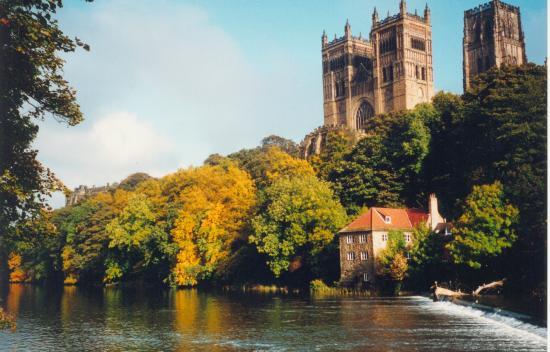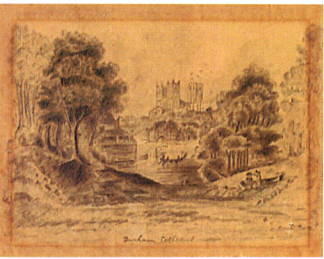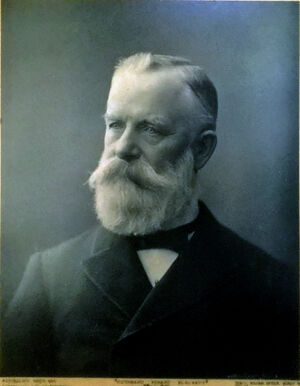
Although only occupied by the Blacketts for a relatively short time, Abbey Mill (now known as the Old Fulling Mill) in Durham City is worthy of mention as it regularly appears in one of the most iconic views of the Cathedral from the opposite bank of the River Wear.
Cuthbert Blackett (1777-1854) seems to have been in occupation of Abbey Mill from just after the beginning of the 19th century until at least 1820. Like his father Joseph, Cuthbert was a spinning wheel maker, and is described as such at the baptism of his eldest child, Alice, in Darlington in 1799, and as a wheelwright in 1801 and 1803, at the baptisms of his next two children when he was living in New Elvet, Durham. At the baptism in 1804 of his daughter Elizabeth his abode is shown as Abbey Mill, Durham, and the same abode is shown for five more of his children baptised between 1806 and 1820, with his occupation shown as worsted weaver in 1817 and worsted manufacturer in 1820. His eldest daughter, Alice, died at Abbey Mill in 1817 and his eldest son, William, is described as of Abbey Mill at his marriage in 1820. In the same year Cuthbert is shown with an abode of Abbey Mill House in the list of freeholders eligible to vote in the General Election Poll for Knights of the Shire for Chester Ward, until 1829 one of the three wards of Durham City. The place of his freehold is, however, shown merely as Durham [City] and is described as land, occupied by Thomas Jackson, so it does not follow that Cuthbert actually owned the freehold of Abbey Mill, which was probably leased from Durham Cathedral.
In the Durham trade directory of 1827, under the heading of Worsted & Woollen Yarn Manufacturers, Abbey Mill is shown as in the occupation of William Dean, and Cuthbert (now trading as Blackett & Gainforth) is shown as of Framwellgate, where he was still living as late as 1851. William Dean seems to have taken over Abbey Mill in 1820 or 1821 as Sarah Deans[sic], an infant, died there in 1821. William was declared bankrupt in 1831 and in 1833 Abbey Mill became the first Durham University museum, although the museum is today housed in more modern premises.

Several of Cuthbert's children emigrated to Australia and New Zealand, including Henry Blackett, who became Mayor of Rangiora, New Zealand, as shown in "Blacket(t)s down under" and Mary Blackett, who is believed to have drawn the adjoining sketch of Durham Cathedral with Abbey Mill shown below it.

Henry Blackett's elder brother, Rev Cuthbert Robert Blackett, emigrated to Victoria, Australia, where his son, also Cuthbert Robert Blackett, became the Government Analytical Chemist for the State of Victoria. He was also a founder of the Pharmaceutical Society of Australia and President of the Pharmacy Board until his death in 1902.
